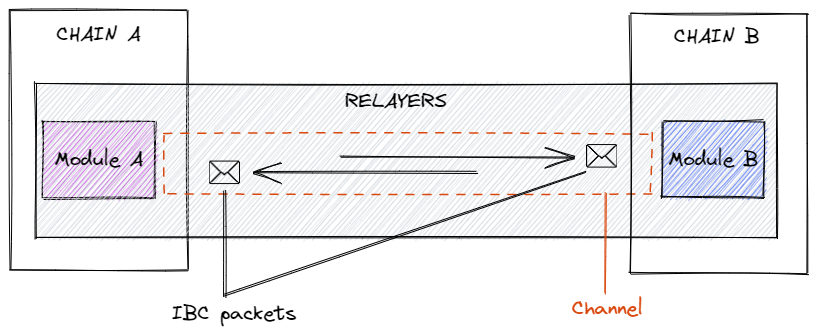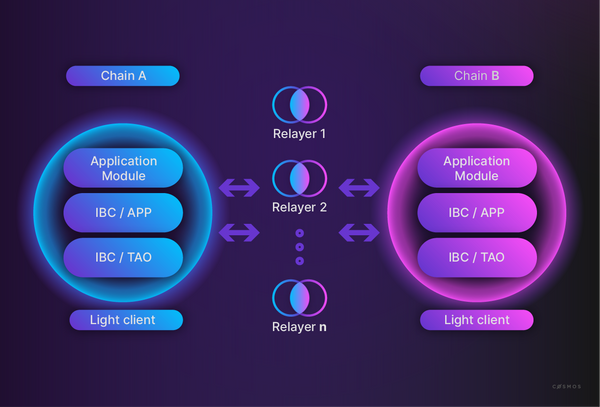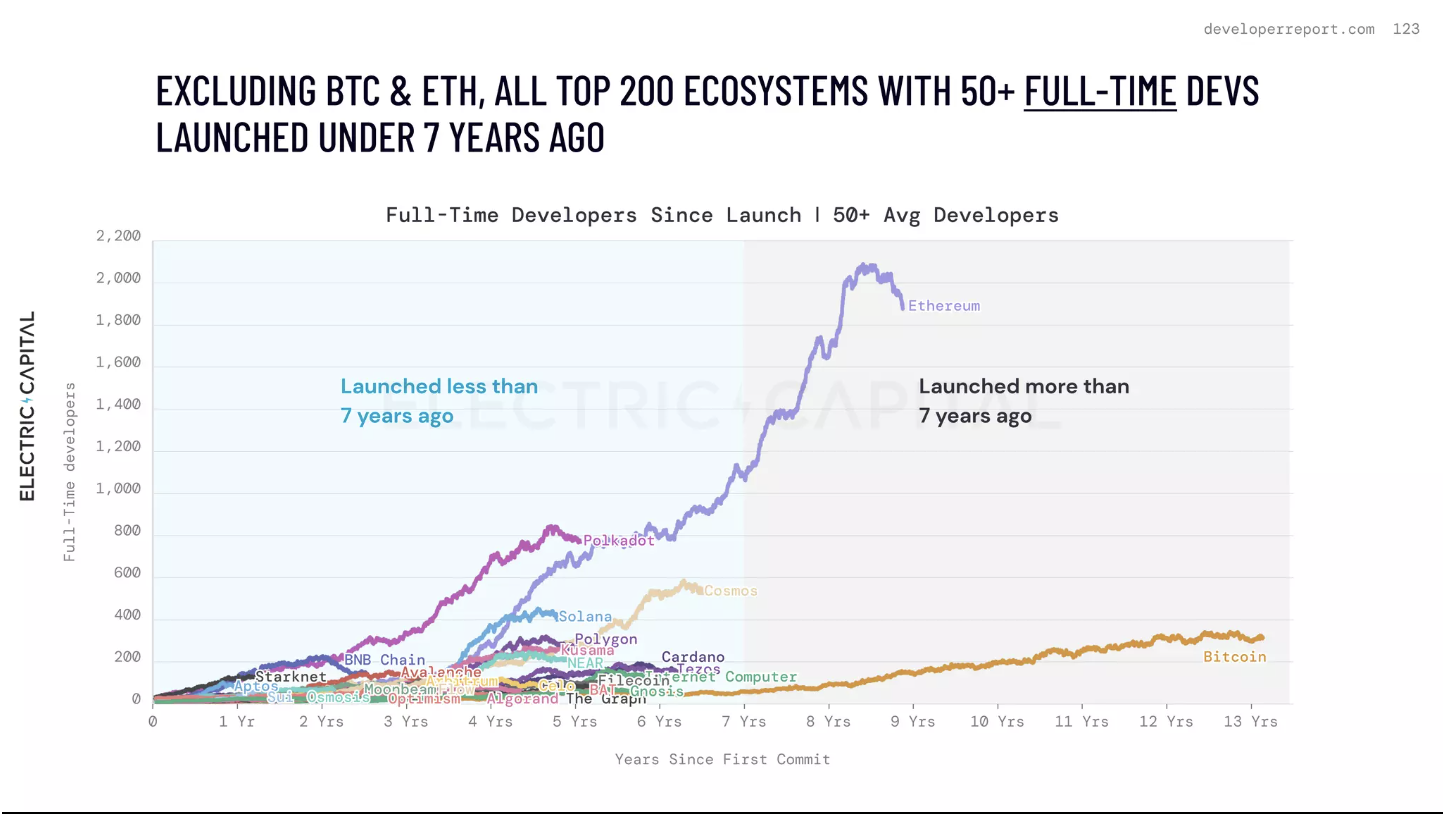Special thanks to Ikuma and Yu Kimura for review and feedback!
tl;dr
- Cosmos is a scalable blockchain ecosystem with interoperability among different blockchains, having a different philosophy and approach than systems like Ethereum and Solana.
- IBC (Inter-Blockchain Communication) is a major feature of Cosmos, playing a critical role in achieving interoperability.
- Going forward, there's a need for the advancement of IBC technology to provide a better developer experience and the overall growth of the ecosystem.
What is Cosmos?
In a popular episode titled "The Blockchain Trilemma" on the Bankless podcast, Cosmos was discussed alongside notable examples such as Ethereum and Solana. Cosmos, which realizes both decentralization and scalability, what kind of project is it?
In the context of crypto, "Cosmos" refers to a project aimed at achieving interoperability among various blockchains. Here, we'll discuss its primary components:
- Cosmos Network: Refers to the entirety, composed of many independent blockchains, including the Cosmos Hub.
- Cosmos SDK: Functions as a toolkit for developers to efficiently build their own blockchain applications and platforms. Its main functions are divided into modules, allowing developers to either use existing modules or create new ones to provide specific features or services.
- Cosmos Hub: The first blockchain developed using the Cosmos SDK. Its native token is ATOM, which has a market capitalization of $2B as of September 2023. The Cosmos Hub has implemented the Interchain Security mechanism.
Unless otherwise stated, "Cosmos" refers to the Cosmos Network in the explanations below.
Features of Cosmos include:
- Inter-Blockchain Communication (IBC): Cosmos features a protocol designed to allow different blockchains to communicate securely and efficiently.
- CometBFT: Cosmos utilizes CometBFT, which implements the Tendermint consensus, offering high scalability and quick block times (instant finality). Previously named "Tendermint," the name changed to "Comet" due to trademark issues.
- Hub and Zone Concept: Cosmos consists of several hubs to which different blockchains (zones) are connected. This allows different zones to interact efficiently.
- Scalability: Cosmos anticipates the existence of different blockchains for each application running on the chain. Each of these blockchains operates independently, enhancing scalability across the entire network.
- Sovereign Blockchains: In Cosmos, each blockchain (or zone) can have its own consensus algorithm and governance mechanism. Each blockchain can issue its own tokens, and major technical changes can be made independently through community discussions.
History of Cosmos
A brief overview of the journey to the current state of Cosmos:
- 2014: Development of Tendermint by Jae Kwon. It's an implementation of the classic Byzantine Fault Tolerant consensus algorithm with added slashing mechanism.
- 2016: Announcement of the Cosmos white paper, introducing the "Internet of Blockchains" concept, Tendermint consensus engine, ABCI application interface, and IBC.
- 2017: Establishment of the Interchain Foundation (ICF) involved in Cosmos development. An Initial Coin Offering (ICO) in the spring raised $17M.
- 2018: Development of the Cosmos SDK and testing of the Cosmos Hub.
- 2019: Launch of the Cosmos Hub.
- 2020: Spin-out of Informal Systems from ICF.
- 2021: Activation of IBC functionality with the release of Stargate.
- 2022: Announcement of the ATOM 2.0 white paper.
- 2023: Activation of the first version of Interchain Security, known as Replicated Security, in Neutron.
What is IBC?
IBC, central to Cosmos's vision of an "Internet of Blockchains," will be explained in detail below:
Source: ELI5: What is IBC?
IBC, short for Inter-Blockchain Communication (Protocol), is an interoperability protocol that allows two different blockchains to communicate with each other. It's not just a bridge for token transfers but a protocol that can transfer any generic message or data in various formats.
By default, different blockchains exist like silos with limited interactions between them. Trust in third-party bridges is required for operations like token transfers between blockchains. However, using IBC allows chains with quick finality to exchange messages without the need for a trusted third party. IBC significantly enhances inter-blockchain interoperability. The Cosmos SDK is available for developers to easily launch IBC-compatible blockchains from scratch.
Source: What is IBC?
It's essential to understand IBC as being divided into the transport layer and application layer. The transport layer allows for quick and cheap verification of IBC messages (data packets) through light clients, enabling safe data exchange without the need for intermediaries. In this data transfer, channels are created for each module, with relayers playing the role of sending messages. The application layer defines applications for various use cases. For instance, the ICS20 standard specifies how data packets should be structured for
Challenges with IBC
In the two years since the release of IBC, over 100 Cosmos chains have been launched and enormous wealth has been transferred between these chains using IBC. However, IBC usage hasn't yet been extended much beyond blockchains made with the Cosmos SDK. To achieve the vision Cosmos sets forth, there's a need to connect with more ecosystems and further the development utilizing IBC.
Here are some current challenges with IBC:
Extending IBC Beyond Cosmos
The IBC, designed to achieve interoperability, can be implemented using the ABCI (Application-Blockchain Interface) even without using the Cosmos SDK. This means that chains other than the so-called Cosmos chains can logically connect with IBC. However, there is the high gas fee issue when connecting with blockchains using EVM, like the popularly used Ethereum or Arbitrum with its Rollups. Polymer, an investment of Tané, is working on this challenge with a vision to connect all blockchains using IBC, leading the expansion through the OpenIBC organization.
Tools and Document Support for Developers Using IBC
Compared to the Ethereum ecosystem, which leverages composability, the tools and document support for Cosmos developers are still immature. Especially, mechanisms like Interchain Queries (ICQ) and Interchain Accounts (ICA) that facilitate the use of IBC are still in their infancy and require improvement. The test framework is also not yet fully matured. Organizations deeply involved in Cosmos software, such as Strangelove, are particularly focused on this area.
Improvement in Overall Marketing
Owing to its historical background and its characteristic of not having a governing body, Cosmos lacks entities committed to the development of its ecosystem from a marketing perspective. Despite having excellent developers, technology, and concepts, in terms of user and developer engagement, it is still behind the Ethereum ecosystem. This challenge should be tackled by the participants of the entire ecosystem, led by the Interchain Foundation.
The Future of Cosmos

Source: Developer Report: Analysis of Open-Source Crypto Developers by Electric Capital
For the growth of any ecosystem, there's a need for applications that are used by many users. Therefore, developers who create these applications are essential for the ecosystem's expansion. The size of the Cosmos developer ecosystem, compared to the Ethereum/EVM/Solidity developer ecosystem, is still small. According to a developer report by Electric Capital, as of 2022, there was about a threefold difference in the number of developers between Ethereum and Cosmos. Considering the recent surge in Rollups, there's likely an even larger number of developers in the Ethereum sphere now.
The vision that Cosmos aims for, the "Internet of Blockchains", should also include connecting chains outside of Cosmos. Therefore, continuous improvements in IBC with a focus on the developer experience, the rise of customized blockchains using the Cosmos SDK to realize new use cases and their applications, and the actualization of interoperability with already popular chains will be challenges going forward. Increased support for the developer ecosystem will be crucial in addressing these challenges.
References
- The Blockchain Trilemma - ETH Vs SOL Vs ATOM with Mike Ippolito by Bankless
- Cosmos History — Part I — Inception to PreLaunch
- Interchain Security Begins a New Era for Cosmos
- What is IBC?
- ELI5: What is IBC?
- Explore a fork of the Solana codebase for NewChain
- IBC: A roadmap for the interchain future
- Developer Report: Analysis of Open-Source Crypto Developers by Electric Capital
Disclaimer: This post is for general information purposes only. It does not constitute investment advice or a recommendation or solicitation to buy or sell any investment. It should not be used to evaluate the merits of making any investment decision. It should not be relied upon for accounting, legal or tax advice or investment recommendations. This post reflects the current opinions of the authors. It is not made on behalf of Tané or its affiliates and does not necessarily reflect the opinions of Tané, its affiliates or individuals associated with Tané. The opinions reflected herein are subject to change without being updated.